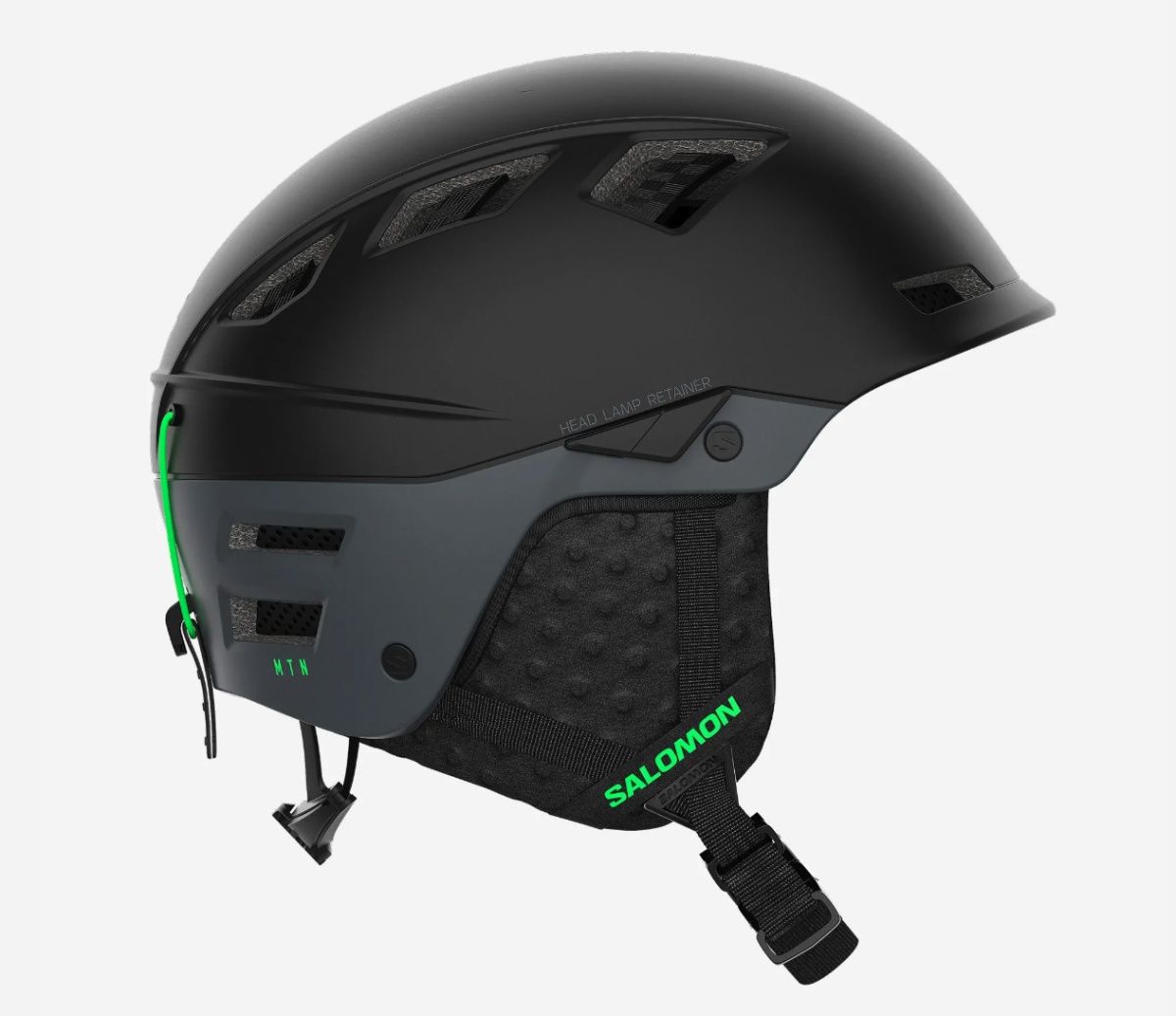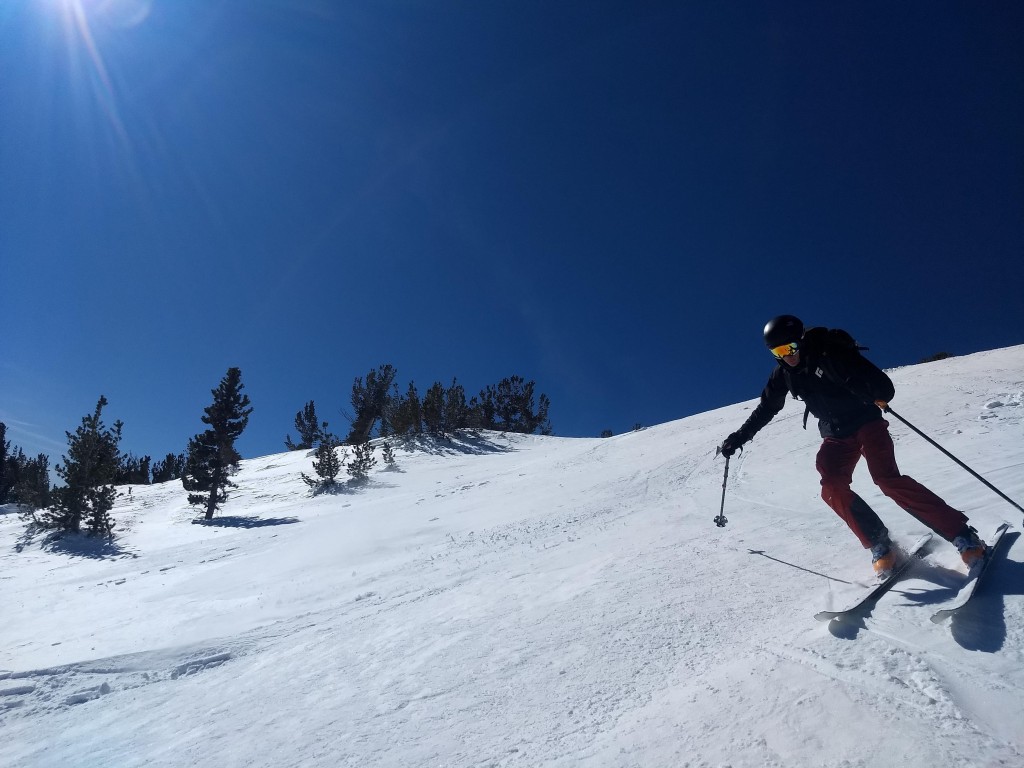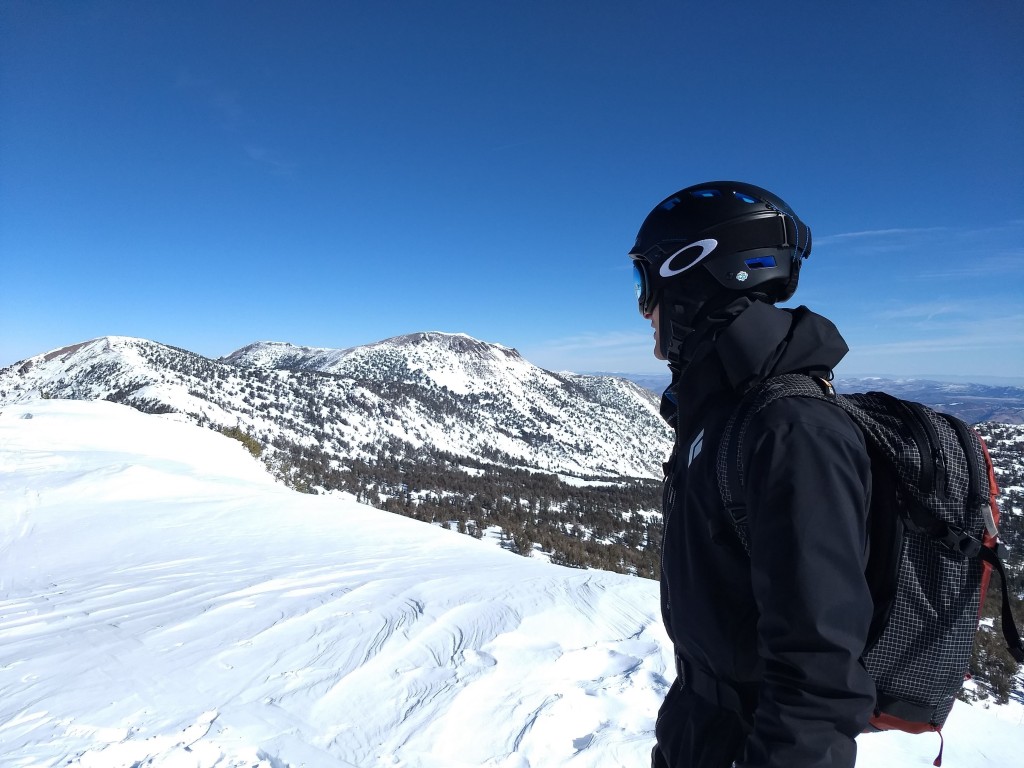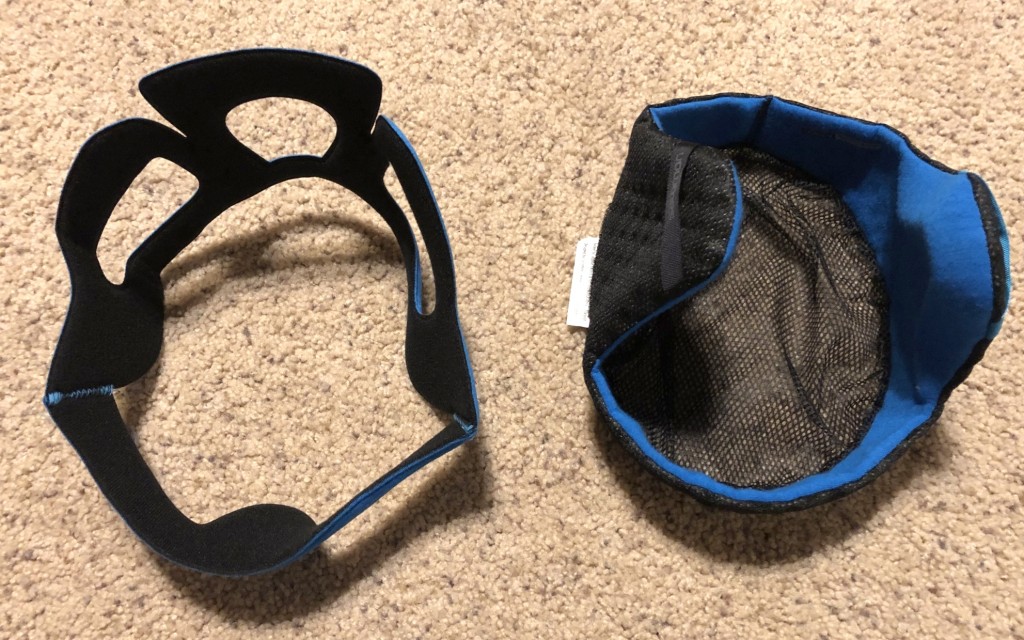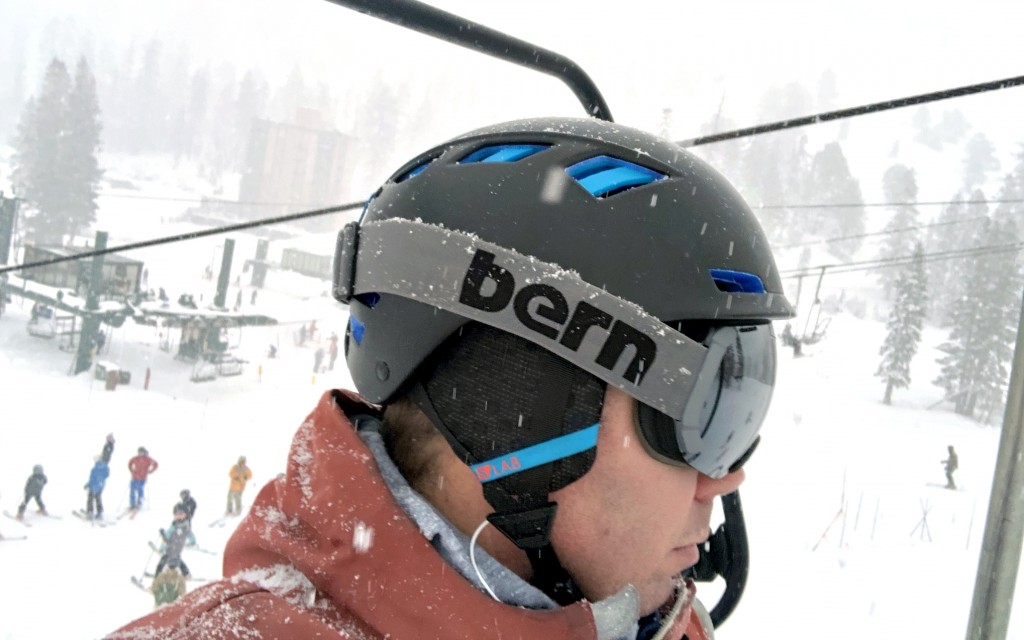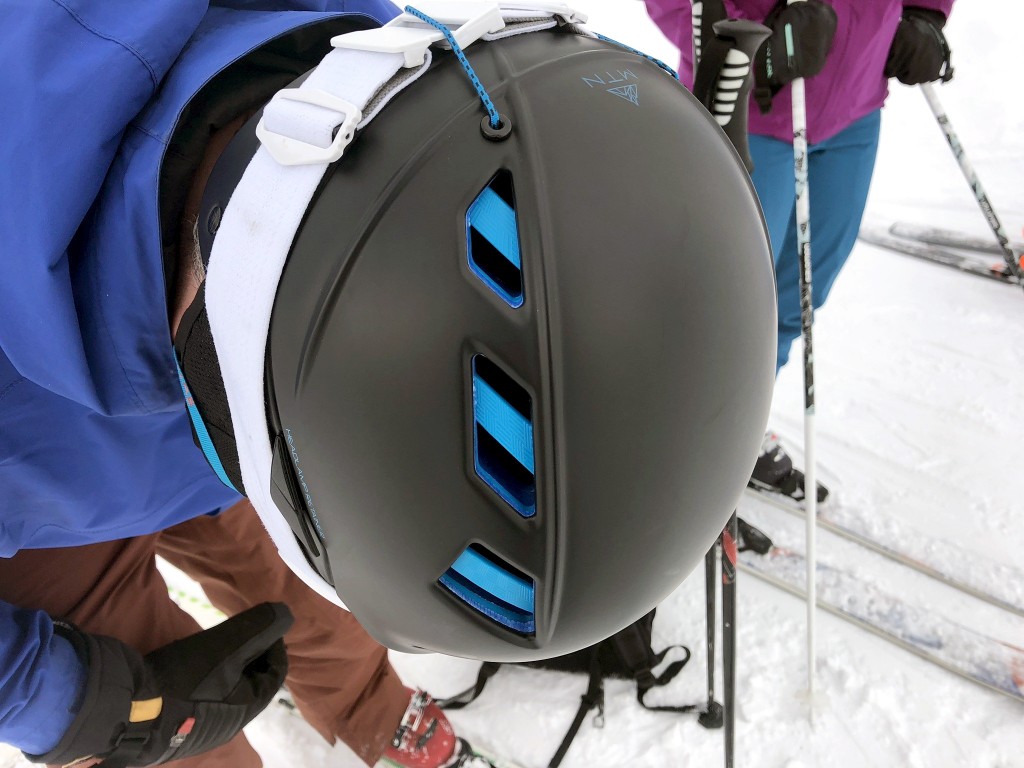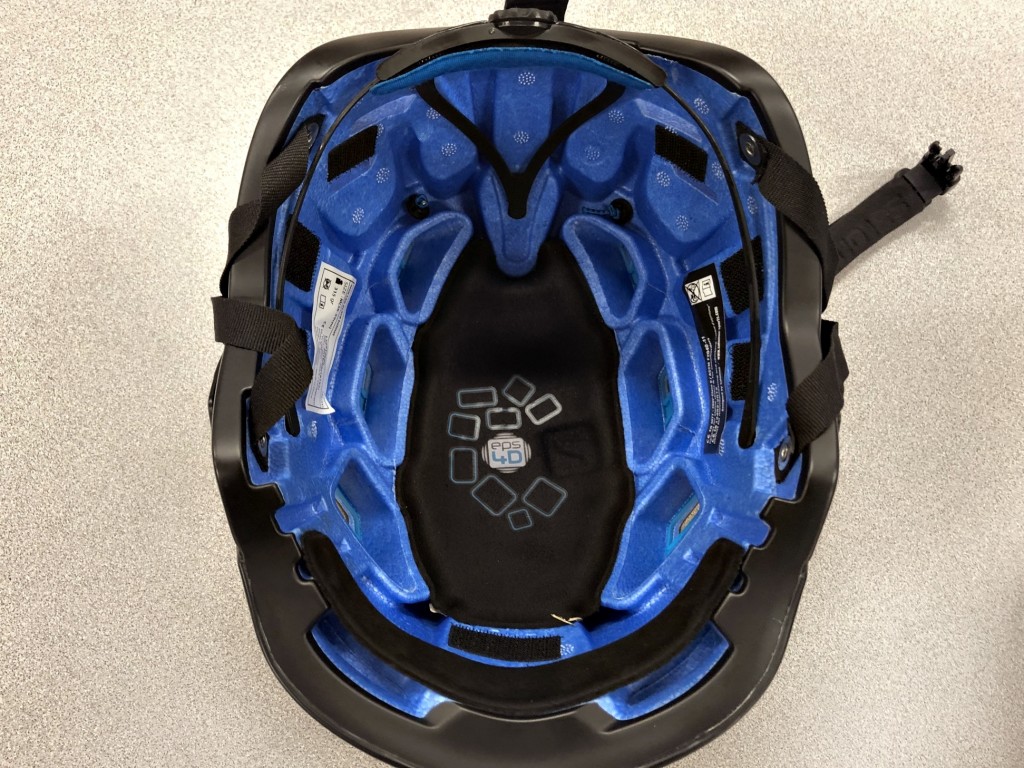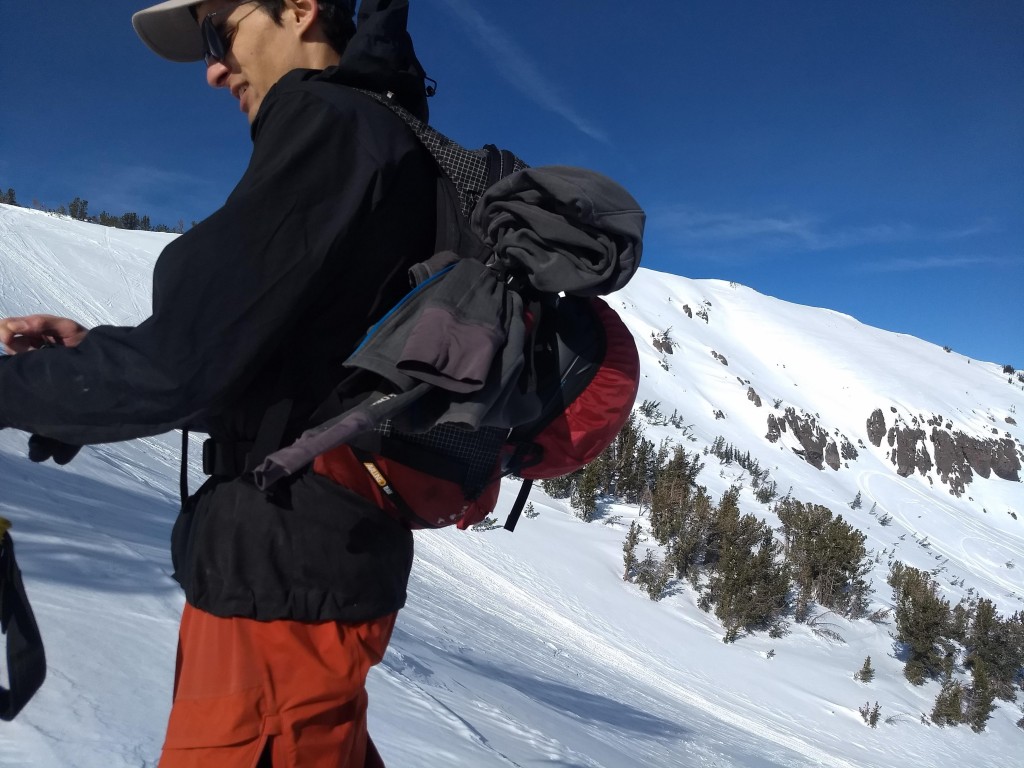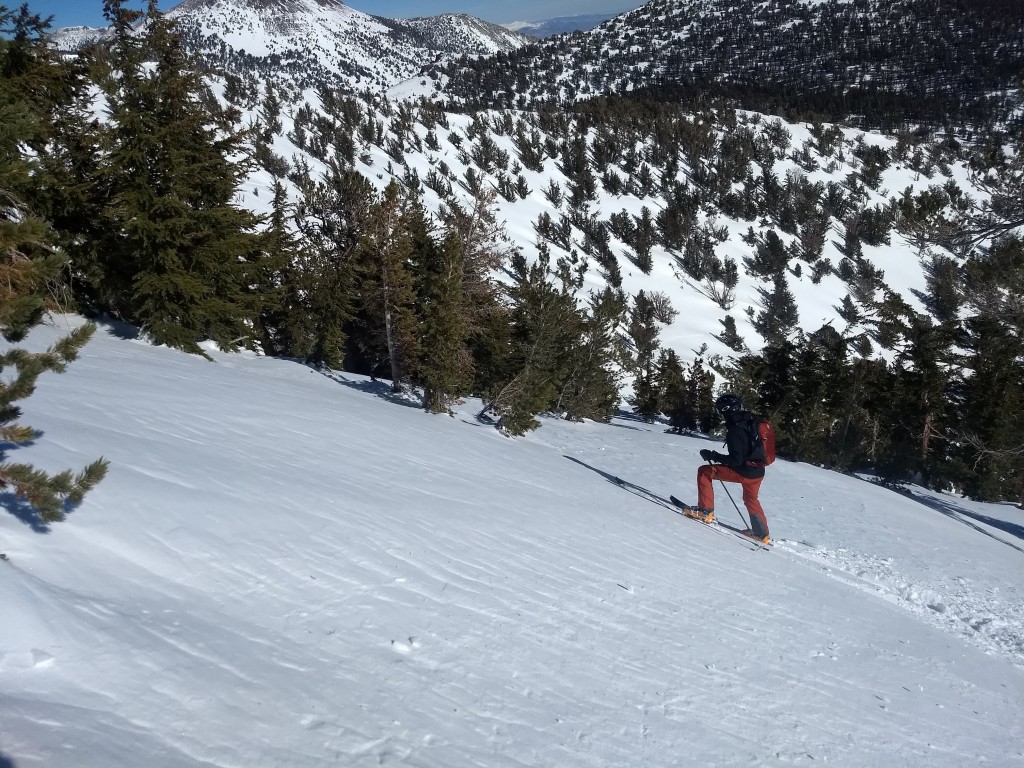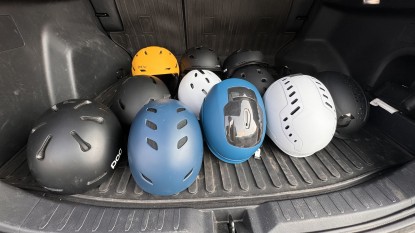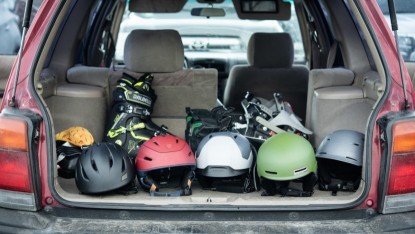Salomon MTN Lab Review
Our Verdict
Our Analysis and Test Results
For the 2023 model year, the Salomon MTN Lab helmet no longer comes in the Black/Blue color we tested. It is now offered in black (pictured above), rainy day (off-white), and bleached aqua (a light blue-greenish). -January 2023
The MTN Lab is a backcountry/mountaineering-specific helmet. As such, it's geared toward more active (see: sweaty) skiers who do more than indulge in gravity-fed resort skiing and riding.
Performance Comparison
Comfort
As with most helmets, the personal fit will dictate a great deal of the overall comfort of a helmet. We found the MTN Lab to be a bit quirky fit-wise, and it earned one of the lowest scores of the group. The fit is a little broader and shallower than some of our other top-rated helmets, meaning those with more slender or tall heads might find the fit a bit off (or might need to consider sizing up or using a skull cap to personalize the fit). Those of us with more narrow heads seemed to feel like the ear pads rode a little high. That said, everyone's skull is different, and our testers with more rounded domes seemed to feel right at home in the MTN Lab.
There is a dial-fit system at the back of the helmet to cinch up the inner fit, which makes a big difference in personalizing your fit. We would definitely recommend testing the fit at your local retailer before purchasing.
Salomon decided to forego plush interior padding with this helmet, likely for weight-saving reasons. The result is that this helmet isn't as cush as lots of the competition in this review. When you get a good fit, it feels relatively comfortable until you compare it to a more padded option. If you feel the need for some extra padding, you can always toss on a beanie underneath.
Warmth
Warmth is where the MTN Lab struggles, or at least requires an assist from its owner. It scored relatively low, but let's get to the positives first. From the mid-skull down (including the ears), the MTN Lab has a soft, warm, Merino wool liner that should suffice on all but the coldest days on the hill (sorry, Jackson Hole in February). Unfortunately, the upper half of the liner is mesh, which is essentially insulation zero.
The MTN Lab is designed with ventilation in mind (see below) much more than warmth, and you may have to make up for this by adding layers elsewhere to stay warm. The vents are large and plentiful. Unfortunately, they're also plug-less. No slider to close the vents, no rubber plugs, nothing. If it's dumping out, it's going to pile up in neat little stacks, just the size of the vents, starting on the mesh liner, directly on top of your head. It's perhaps the MTN Lab's most significant flaw, but one that you can mitigate by wearing a skull cap (or another hat of your choice) underneath the helmet. Also, knowing that the backcountry hardcore is a group of innovators and DIYers, there are many creative ways you could plug the vents when necessary using things you likely carry in your backcountry pack already (duct tape, anyone?).
Now, should you have to do these things? No. We just know that regular users of the backcountry tend to be both willing and able to improvise and that, to them, duct tape is a badge of honor. It's also possible that the folks at Salomon are so committed to backcountry safety in this, their backcountry-specific helmet, that they don't want you out in the backcountry when it's stormy and avalanche danger is at Defcon 1. Ideally, you're out making skin tracks under bluebird skies, and much of this section of the review is irrelevant.
Ventilation
Now that we've dispensed with the negatives let's get to where the MTN Lab shines. It is easily one of the most ventilated helmets on the market and a top dog in our group of contenders. It is one of the highest-scoring helmets in this metric. You've got two vents in the front, forehead-level; six on the top, three back on both sides; and four more at the back of the helmet flanking the goggle strap.
To say that the ventilation in the MTN Lab is extraordinary isn't hyperbole. We're confident you could ski the mean streets of Phoenix in August and feel well-vented (okay, that's a stretch). The mesh-topped liner also adds to the incredible ventilation. If you'd still like to pair it down further, you can remove the liner altogether to exorcize the Merino wool liner and ear flaps, at which point the MTN Lab starts to look like a climbing helmet hybrid.
We also appreciate that you can remove the liner for washing. Backcountry users know that after a few trips, just about anything that's been up and down a few laps gets funky. It's nice to know you can clean your helmet just like you (hopefully) clean your socks.
Weight
Weight is another category that the MTN Lab shines in. At a featherweight 12.7 oz., it's pushing just how lightweight a ski helmet can be while still offering the necessary protection.
When it comes to weight, it's evident that Salomon is going all-in on a backcountry-specific helmet. The fight against gravity as you skin up a mountain is battle enough. Every ounce you can leave at home makes your journey quicker and easier, which should make you happier. Whether you're a committed weight-weenie, right down to the uber-light ski setup, or you just want your ascents to be easier, the MTN Lab won't hold you back.
Goggle Compatability
There is nothing revolutionary about the goggle fit of the MTN Lab. It's not going to be the reason you buy it, nor is it going to make you reconsider your purchase. A bungee strap pulls down from the back and hooks to keep your goggle safely secured on the helmet. The goggles we tested didn't leave any noticeable gaps or obvious points of discomfort.
One point to add is that Salomon, in its commitment to all things backcountry with this helmet, did include two headlamp retainers (one on either side) to keep your headlamp fixed firmly on the front of the helmet and the straps from riding up on the rounded edges.
We were curious, so we tried headlamps on a few other models. Sure enough, with a little bit of action (which you could certainly expect skinning uphill and skiing downhill), they tended to slide up and off the top of the helmet. While mainly a niche use of this Salomon helmet, it's clever, and it works. You'll be the envy of the skin line on those dark morning ascents and evening laps. It is an awesome feature but limited in usefulness to a smaller group of people.
Style
Style may be in the eye of the beholder, but in our opinion, the MTN Lab is a smooth-looking helmet. It's not loud or showy or particularly stylish; it's classic. For those style-conscious backcountry skiers, it should match up one way or another to the rest of your gear. It also comes in three color options, black, rainy day (off-white), and bleached aqua (light blue-greenish).
Should You Buy the Salomon MTN Lab?
The MTN Lab is built for a specific purpose and a specific crowd, and if you are looking for a traditional and cozy helmet, you may have to look elsewhere. It's not for everyone, but for those who spend most or all of their days providing their own uphill ride, it's a great helmet. The MTN Lab isn't the cheapest helmet we tested, but it is one of the most discipline-specific. If you're a committed backcountry skier, the price shouldn't scare you off.
What Other Ski Helmets Should You Consider?
The MTN Lab offers features built around being in the backcountry more than any other helmet we tested. If you are geared similarly toward being in the backcountry, this helmet should have your attention. Given the increased danger of backcountry travel, a bump in price in just about any backcountry-specific gear is understandable. You can also consider that, to a degree, you're buying two helmets in one. It's a ski helmet; it's a mountaineering helmet; it's both. Our favorite backcountry-focused option to consider is the Smith Summit Mips. If you spend your time on skis running laps on resort groomers, the Smith Vantage Mips is our top recommendation.


